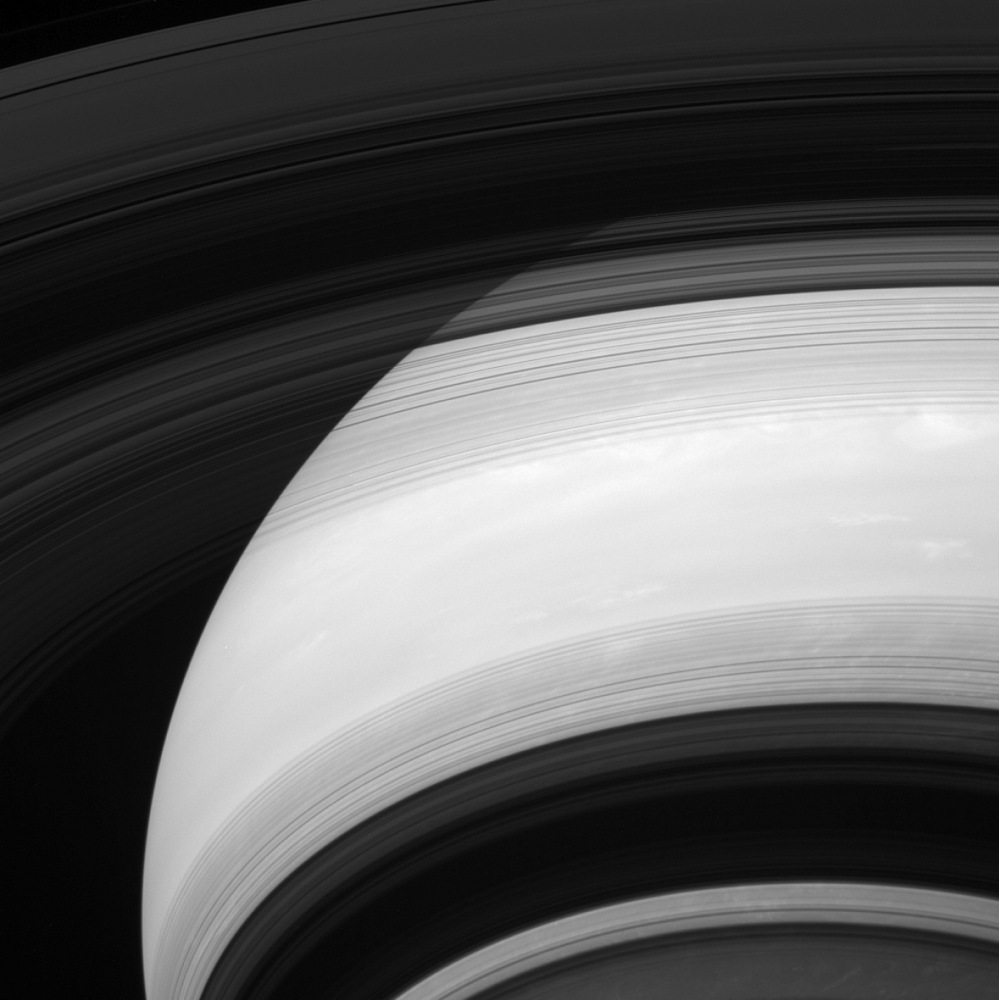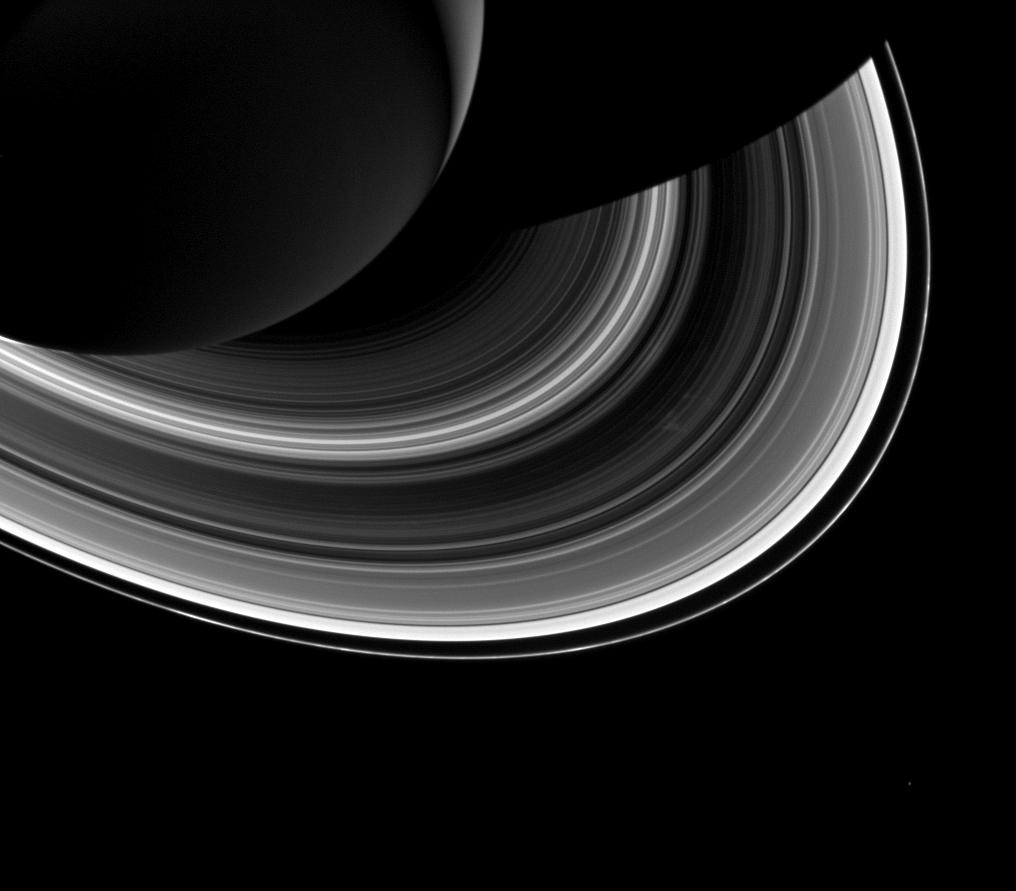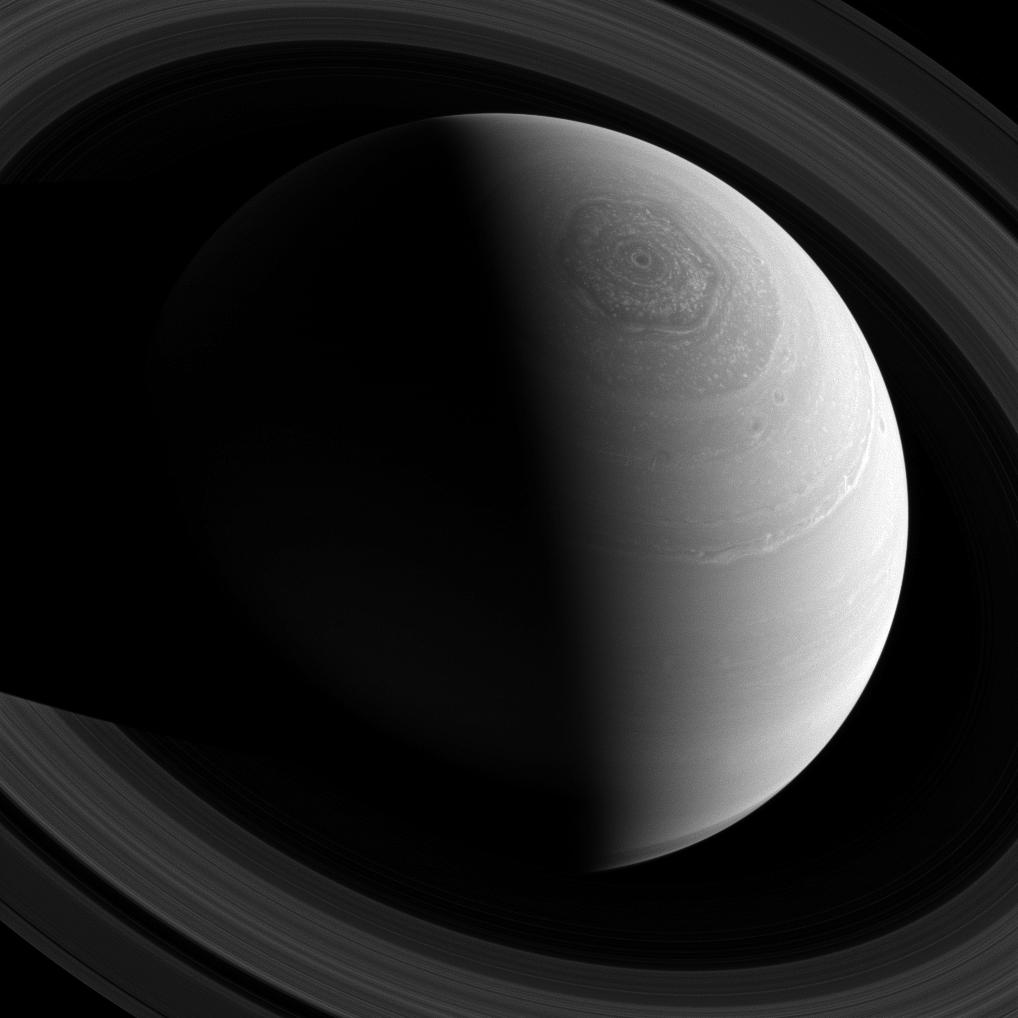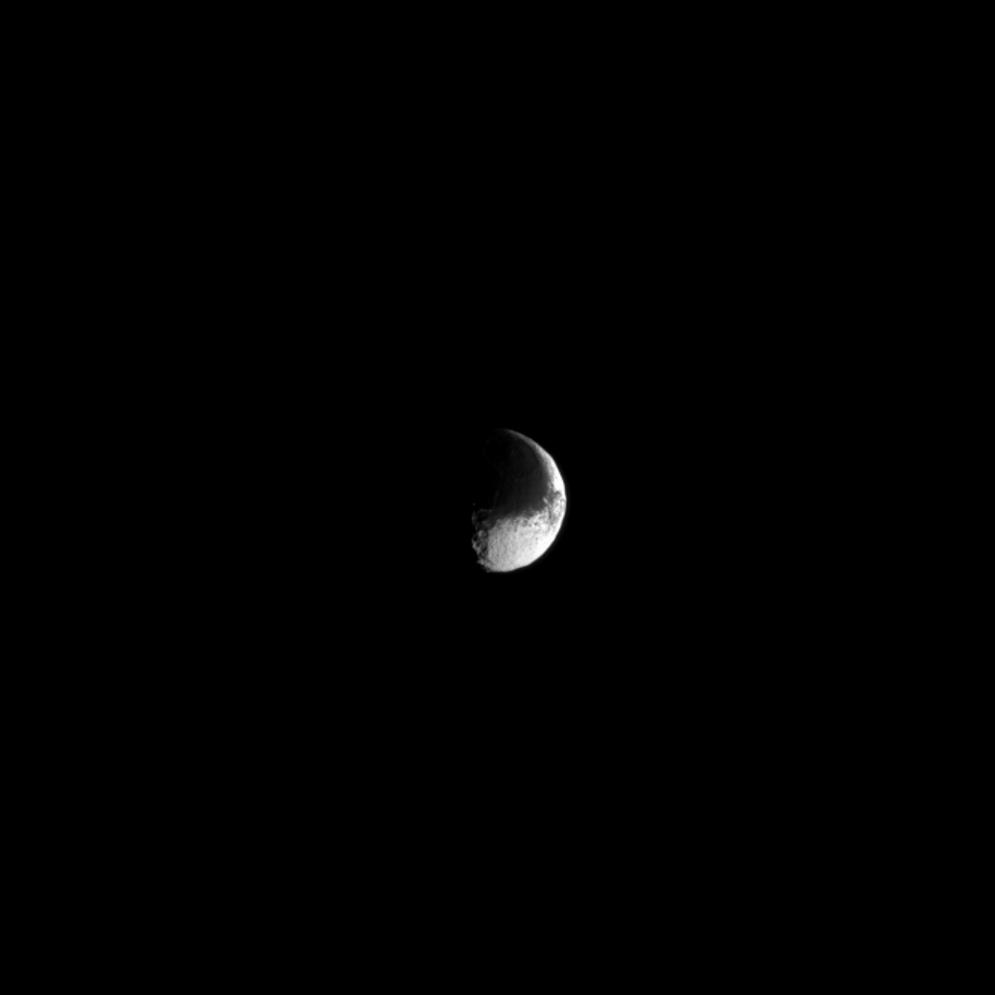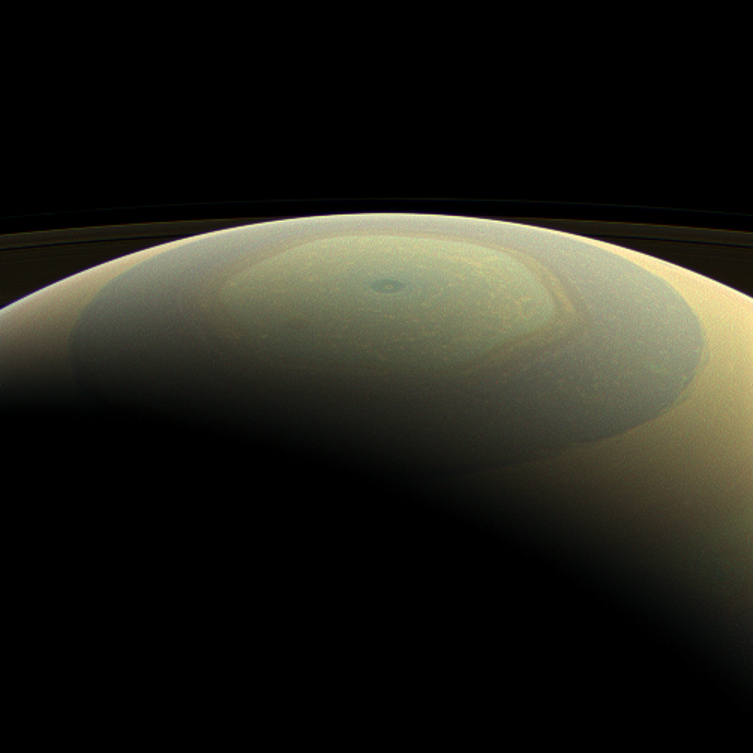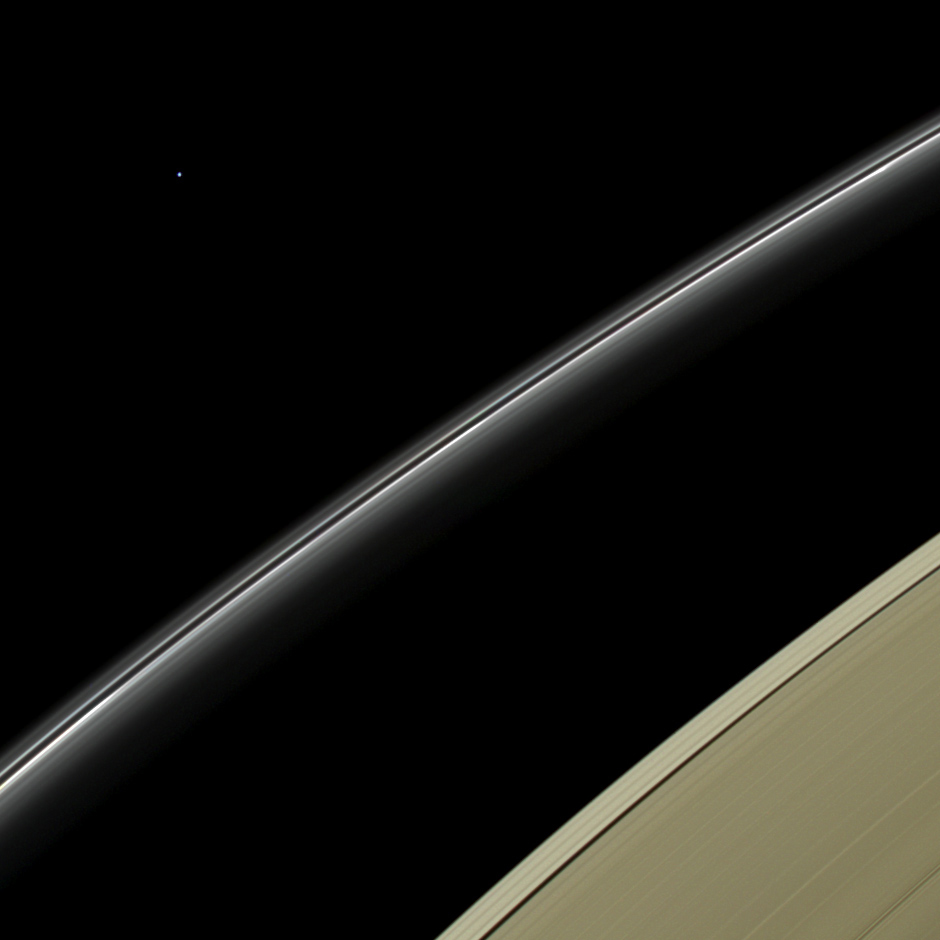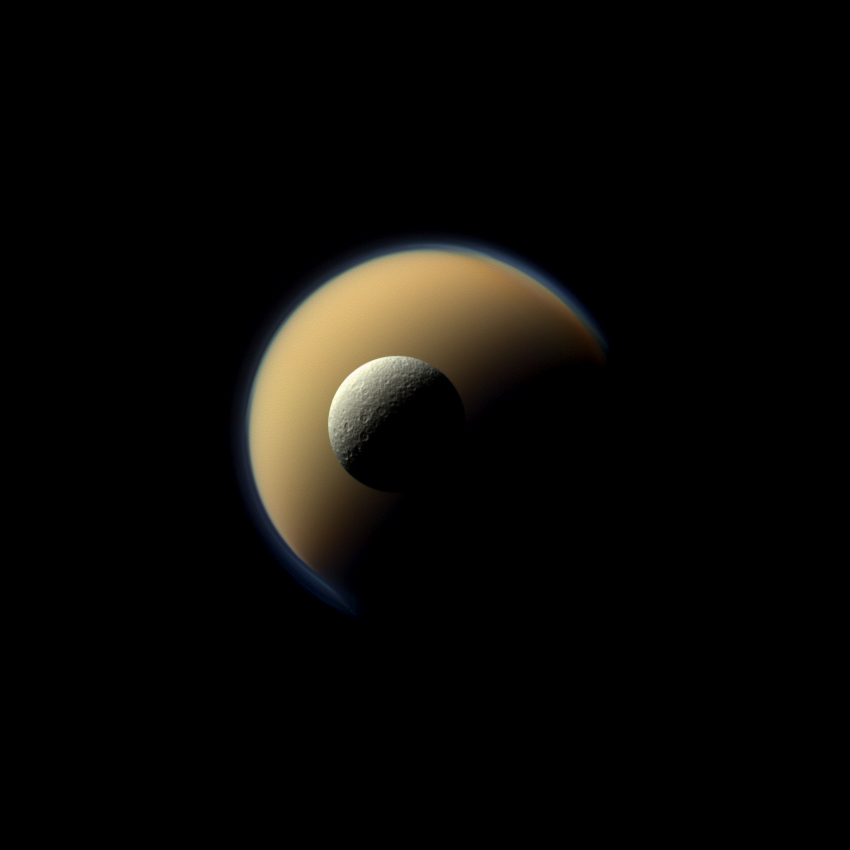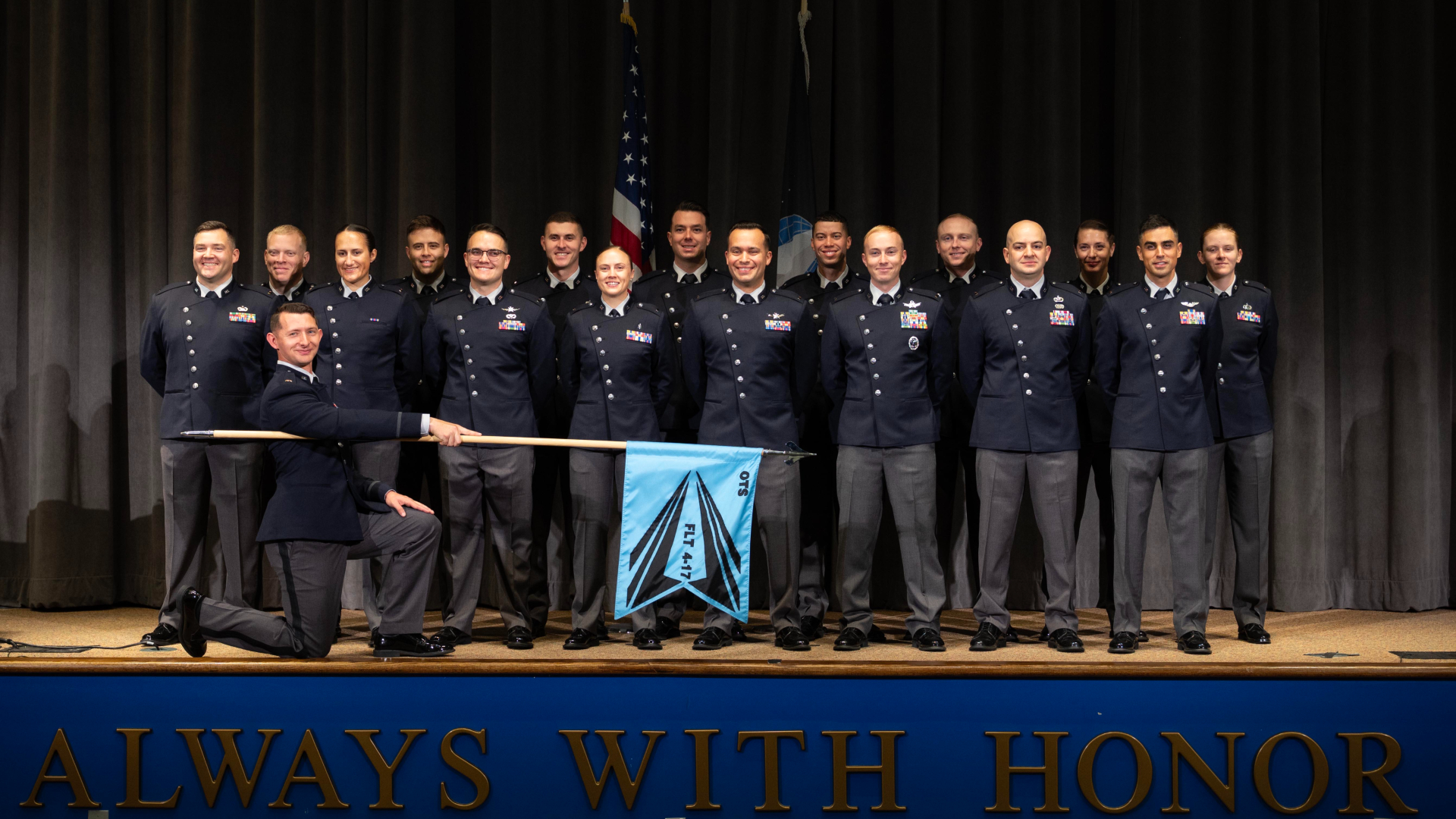Amazing Saturn Photos From NASA's Cassini Orbiter
Saturn's Rings' Cast Shadows
Saturn's rings cast shadows on the planet, but the shadows appear to be inside out. The edge of Saturn's outermost A ring can be seen at the top left corner of the image. Moving towards the bottom of the page, one can see the faint Cassini Division, the opaque B ring and the innermost C ring, which contains several ringlets that appear dark against Saturn in this geometry. The bottom half of the image features the shadows of these rings in reverse order superposed against the disk of the planet: the C ring, the B ring, the Cassini Division and the inner half of the A ring.
Saturn's A Ring Edge
The disturbance visible at the outer edge of Saturn's A ring in this image from NASA's Cassini spacecraft could be caused by an object replaying the birth process of icy moons. [Read the Full Story]
Saturn's Shadow and Rings
Among the interplay of Saturn's shadow and rings, Mimas, which appears in the lower-right corner of the image, orbits Saturn as a set of the ever-intriguing spokes appear in the B ring (just to the right of center). Image released March 3, 2014. [Read the Full Story Behind This Photo Here]
Saturn Hexagonal Jet Stream Cassini Spacecraft View
Saturn's odd hexagonal jet stream swirls in this amazing photo taken by the Cassini spacecraft. Image released Feb. 3, 2014. [Read the Full Story Behind this Image Here]
Saturn's 'Yin' and 'Yang' Moon Iapetus
The Cassini spacecraft snapped this image of Saturn's "yin and yang" moon Iapetus on Aug. 30, 2013. Image uploaded Jan. 16, 2014. [Read the Full Story Behind This Photo Here.]
Saturn's Hexagon: Ornament View
The globe of Saturn, seen here in natural color, is reminiscent of a holiday ornament in this wide-angle view from NASA's Cassini spacecraft. The characteristic hexagonal shape of Saturn's northern jet stream, somewhat yellow here, is visible. At the pole lies a Saturnian version of a high-speed hurricane, eye and all. This image was taken on July 22, 2013 and released on Dec. 23. [Read the Full Story Here]
Winter Blues on Saturn
The spectacular rings of Saturn cast dark shadows on the ringed planet as the winter season approaches in Saturn's southern hemisphere in this view from the Cassini spacecraft. With the cold season comes a blue hue on Saturn that is likely caused by a drop in ultraviolet sunlight and haze it produces. This image was taken on July 29, 2013 and released on Dec. 23. [Read the Full Story Here]
Breaking space news, the latest updates on rocket launches, skywatching events and more!
Cassini's Image of Uranus
This view from NASA's Cassini spacecraft features a blue planet, but unlike the view from July 19, 2013, that featured Earth, this blue orb is Uranus, imaged by Cassini for the first time. Image released May 1, 2014.
Enceladus, Saturn's Snowball
Saturn's moon Enceladus, covered in snow and ice, resembles a perfectly packed snowball in this image from NASA's Cassini mission released on Dec. 23, 2013. This view was taken by Cassini on March 10, 2012. It shows the leading side of Enceladus. North on Enceladus is up and rotated 6 degrees to the left. [Read the Full Story Here]
Titan and Rhea Together
Saturn's largest and second largest moons, Titan and Rhea, appear to be stacked on top of each other in this true-color scene from NASA's Cassini spacecraft released on Dec. 23, 2013. The north polar hood can be seen on Titan appearing as a detached layer at the top of the moon on the top right. This view looks toward the Saturn-facing side of the smaller Rhea. [Read the Full Story Here]

Space.com is the premier source of space exploration, innovation and astronomy news, chronicling (and celebrating) humanity's ongoing expansion across the final frontier. Originally founded in 1999, Space.com is, and always has been, the passion of writers and editors who are space fans and also trained journalists. Our current news team consists of Editor-in-Chief Tariq Malik; Editor Hanneke Weitering, Senior Space Writer Mike Wall; Senior Writer Meghan Bartels; Senior Writer Chelsea Gohd, Senior Writer Tereza Pultarova and Staff Writer Alexander Cox, focusing on e-commerce. Senior Producer Steve Spaleta oversees our space videos, with Diana Whitcroft as our Social Media Editor.
